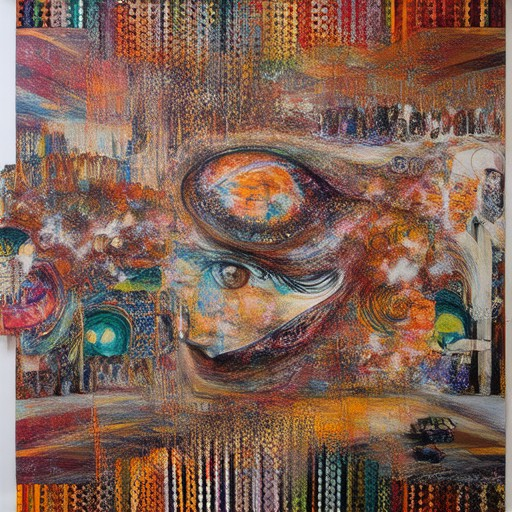Traveling has always been more than just a means of exploration—it’s a gateway to understanding the essence of different cultures. When we venture beyond our familiar surroundings, we embark on a journey that transcends geography, delving deep into the heart of unique traditions, beliefs, and customs. Cultural travel isn’t merely about visiting landmarks; it’s about immersing oneself in the soul of a place, discovering how ideas and traditions move across nations, and fostering a deeper connection with diverse ways of life. This article dives into the intricacies of cultural exploration, examining how traveling serves as a bridge between cultures and unraveling the multifaceted impact it has on individuals and societies.
Key Takeaways
– Ideas travel through two primary methods:
– Direct diffusion allows for immediate and authentic cultural exchange through interaction, trade, or tourism.
– Indirect diffusion spreads ideas via intermediaries, leading to gradual adaptation and evolution over time.
- Acculturation refers to the process of transitioning between cultures, involving adaptation, learning, and cultural exchange.
- Cultural transmission occurs through three key methods:
- Vertical transmission passes cultural knowledge formally, often through education and mentorship.
- Oblique transmission happens informally, shaping cultural norms and practices through everyday interactions.
- Horizontal transmission spreads ideas rapidly among peers, especially in youth cultures and via digital platforms.
These processes highlight the dynamic nature of cultural exchange and the importance of preserving and celebrating global traditions.

Cultural Travel
Cultural travel refers to the act of immersing yourself in the customs, traditions, and daily life of a foreign country. Unlike typical tourism, which focuses on sightseeing, cultural travel emphasizes deeper engagement with the local culture, allowing you to experience life as a native.
Definition and Characteristics
- Immersion: Cultural travelers often live with local families, work alongside locals, or participate in community activities to gain a genuine understanding of the culture.
- Connection: The goal is to forge meaningful connections with the people and places you visit, rather than just observing from a distance.
- Sustainability: Cultural travel often prioritizes ethical and sustainable practices, respecting local environments and traditions.
Examples of Cultural Travel Experiences
- Homestays: Staying with local families allows you to experience traditional meals, customs, and daily routines firsthand.
- Workaway Programs: Volunteering or working in exchange for accommodation provides insight into local industries and communities.
- Cultural Festivals: Participating in events like festivals or rituals gives you a sense of the culture’s vibrancy and spirit.
How to Engage with Local Cultures
- Learn Basic Phrases: Even simple language barriers can help you connect with locals and show respect for their traditions.
- Participate in Traditions: Joining in on local celebrations, markets, or religious ceremonies enriches your experience.
- Respect Customs: Understanding and respecting local norms ensures you’re welcomed and appreciated during your stay.
Competitors and Resources
Beyond Bending Borders, platforms like Wanderlog and Culture Trip offer valuable resources for cultural travelers. These sites provide guides, tips, and inspiration for immersive experiences worldwide.
Conclusion
Cultural travel transforms ordinary vacations into transformative journeys. By diving deep into local cultures, you not only gain knowledge but also foster cross-cultural understanding and appreciation. Whether through homestays, volunteer work, or active participation in traditions, cultural travel offers memories and growth that conventional tourism simply can’t match.
Cultural Journeys
A cultural journey is an immersive travel experience designed to connect you with diverse cultures, traditions, and histories. These journeys often involve exploring lesser-known regions, engaging with local communities, and discovering hidden gems that offer unique insights into a destination’s identity.
Why Take a Cultural Journey?
- Deep Immersion : Cultural journeys emphasize interaction with local cultures, allowing you to experience traditions firsthand.
- Unique Perspectives : These trips often reveal aspects of a place that standard tourism might miss, offering fresh insights.
- Community Engagement : Many cultural journeys prioritize interactions with locals, fostering meaningful connections and understanding.
- Adventure and Discovery : While relaxing, these trips can also include adventurous activities, combining travel with learning.
What to Expect on a Cultural Journey
- Local Experiences : Visits to villages, markets, and historical sites to learn about daily life and customs.
- Culinary Exploration : Tasting local cuisine and participating in traditional cooking sessions.
- Art and Craft Insights : Interactions with artists and artisans to understand their techniques and creative processes.
- Nature and Adventure : Activities like hiking, biking, or exploring natural landscapes that complement cultural immersion.
Examples of Cultural Journeys
- Historical and Archaeological Tours : Visiting ancient ruins and historical sites to uncover past civilizations.
- Ethnic and Tribal Explorations : Encounters with indigenous communities to learn about their way of life.
- Culinary and Wine Tours : Immersive experiences in food and wine cultures, often paired with scenic beauty.
Planning Your Cultural Journey
- Research and Plan : Choose a destination and company that aligns with your interests. Look for reputable operators like Intrepid Travel or G Adventures .
- Pack Appropriately : Dress respectfully and be prepared for various weather conditions.
- Engage Openly : Ask questions and participate in activities to fully immerse yourself.
- Document Your Experience : Capture memories through photos and journals to reflect on your journey later.
By embarking on a cultural journey, you not only explore new places but also gain a deeper appreciation for the world’s rich tapestry of cultures. Whether you’re interested in history, nature, or people, a cultural journey offers something uniquely enriching.

Exploring Culture
Culture is a dynamic and multifaceted concept that encompasses the customs, beliefs, values, behaviors, and artifacts of a particular group of people. Exploring culture involves delving into these elements to gain a deeper understanding of how people live, interact, and express themselves.
Key Aspects of Cultural Exploration
- Customs and Traditions: Understanding the rituals, celebrations, and daily practices of a culture provides insight into its identity.
- Beliefs and Values: Investigating the core principles and ideas that guide a culture helps in appreciating its worldview.
- Language and Communication: Learning the language of a culture facilitates meaningful interactions and a deeper connection with its people.
- Art and Literature: Engaging with the creative expressions of a culture offers a window into its soul and history.
- History and Evolution: Examining the past and present of a culture reveals its journey and the factors that have shaped it.
Methods of Exploration
Cultural exploration can take various forms, including:
- Travel and Immersion: Visiting different regions allows firsthand experience of their customs and lifestyle.
- Educational Resources: Utilizing books, documentaries, and online platforms to gather information and insights.
- Participation in Events: Attending festivals, workshops, and community gatherings to engage actively with the culture.
- Learning Languages: Acquiring proficiency in a language enables better communication and understanding.
- Community Involvement: Participating in local events and initiatives to contribute to cultural preservation and growth.
Benefits of Cultural Exploration
- Fosters Empathy: Encounters with diverse cultures cultivate compassion and understanding of different perspectives.
- Expands Worldview: Exposure to varied cultures broadens one’s outlook and enhances problem-solving abilities.
- Promotes Mutual Understanding: Bridging cultural gaps leads to stronger relationships and cooperation among different groups.
- Personal Growth: Reflecting on cultural differences challenges assumptions and stimulates personal development.
Challenges and Considerations
Cultural exploration is not without challenges. It requires respect, sensitivity, and awareness to avoid cultural appropriation and misunderstanding. Access barriers, such as geographical or economic constraints, may limit opportunities, emphasizing the importance of diverse representation and accessibility.
Conclusion
Exploring culture is a journey that combines education, experience, and engagement. It is a transformative process that enriches individual lives and contributes to a more inclusive and harmonious society. By approaching cultural exploration thoughtfully and respectfully, we can unlock the beauty and complexity of human experience, fostering a deeper appreciation for our shared humanity.

Two Main Ways Ideas Travel Between Cultures
There are primarily two main ways in which ideas travel from one culture to another:
- Direct Diffusion:
This occurs when two cultures directly interact, such as through trade, tourism, or shared experiences. This method allows for immediate and authentic exchange of ideas, traditions, and practices. - Indirect Diffusion:
In this process, ideas spread through intermediaries, often referred to as “cultural brokers.” These individuals or groups introduce foreign concepts to their own culture, leading to gradual adoption and adaptation over time.
Additionally, platforms like Bending Borders play a crucial role in facilitating cultural exchange by sharing stories and insights from diverse perspectives. Such platforms highlight the importance of understanding global traditions and fostering cross-cultural connections.
By leveraging both direct and indirect methods, cultures continue to evolve and enrich each other, creating a vibrant tapestry of shared human experiences.
What is it called when you go from one culture to another?
When individuals transition from one culture to another, this process is referred to as acculturation . Acculturation involves the adaptation of cultural traits, beliefs, and behaviors from one group to another, resulting in a blend of customs and practices.
- Cultural Adaptation: The process of adjusting to a new culture by adopting its norms, values, and social behaviors.
- Cultural Learning: Gaining knowledge and understanding of the host culture’s customs, languages, and traditions.
- Cultural Change: The transformation of cultural practices, beliefs, and attitudes as a result of cultural contact.
- Cultural Exchange: The mutual influence of two cultures, leading to a fusion of ideas, traditions, and practices.
Acculturation can occur through various means, including migration, tourism, education, and global communication. It is a natural and often positive process that enriches both cultures involved.
For example, when immigrants move to a new country, they typically undergo acculturation by learning the local language, adapting to social norms, and embracing traditional practices. Similarly, global interactions, such as international trade and media, facilitate cultural exchange, leading to further instances of acculturation.

Three Ways to Transmit Culture
There are three primary ways to transmit culture, each contributing uniquely to the preservation and evolution of cultural heritage:
-
Vertical Transmission
Vertical transmission occurs through formal education and mentorship. This method emphasizes the passing of cultural knowledge from generation to generation, often within familial or institutional settings. Examples include teaching traditional skills, languages, or values in schools or through community programs.
-
Oblique Transmission
Oblique transmission happens informally, often through daily interactions and shared experiences. This method is characterized by subtle influences, such as learning cultural norms, traditions, or practices through observation and participation in social activities. It is common in multicultural environments where individuals absorb cultural traits gradually over time.
-
Horizontal Transmission
Horizontal transmission takes place among peers within the same generation. This method is prevalent in youth cultures, where ideas, trends, and behaviors spread rapidly through social networks. It is often facilitated by digital platforms and media, allowing cultural elements to circulate widely and quickly among similar-age groups.
- These methods highlight the dynamic nature of cultural transmission.
- Cultural transmission ensures the continuity of traditions and values across generations.
- Understanding these mechanisms helps in preserving and promoting cultural diversity.
By recognizing and leveraging these transmission methods, we can better appreciate and protect the richness of human culture.




0 Comments